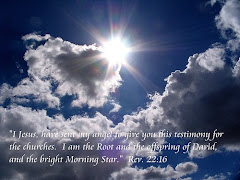
Many people are surprised to learn that the Vatican funds astronomical research. After all, it was the Roman Catholic Church that condemned Galileo Galilei, the first person to apply a telescope to astronomy, in 1633 for teaching that Earth moves around the sun.
But the notorious Galileo case has overshadowed four centuries of steady Vatican support for astronomy, said George Coyne, director of the Vatican Observatory. Coyne, a Jesuit priest with a doctorate in astronomy from Georgetown University, applied for NASAs astronaut program in the mid 1960s but was rejected because he lacked eagle-eye vision.

Spiral galaxy NBC 2903: This 400-second exposure was made with the Columbia University CCD camera by Richard P. Boyle and Austin Tomaney. The galaxy is home to 10 billion or more stars.
"The Galileo affair was fabulously interesting, and it did show a degree of ignorance on the part of the church, theres no doubt about that," Coyne said. "But to say that thats characteristic of the churchs attitude toward science is where I think a big leap is made."
Coyne co-chaired the scientific and epistemological section of the Pontifical Commission that studied the Galileo case for 13 years. In October 1992, after reviewing the commissions report, John Paul II proclaimed that the Roman Catholic Church erred in condemning Galileo, who spent the last eight years of his life under house arrest. At his trial before the Roman Inquisition, Galileo defended his endorsement of the Copernican system by stating that scientific research and the Christian faith are not mutually exclusive.
"He said that Scripture is intended to teach us how to go to heaven, and not how the heavens go," Coyne said. "Its a beautiful phrase, and it says that Scripture is not teaching science. Scripture is made up of many literary forms: Some of its poetry, some of its history, but none of its science.
"Galileo really understood that and tried to get others to understand it," Coyne said. "He was a better theologian than any of them. He was 400 years ahead of the Catholic Church."
Astronomy was part of the original seven subjects taught at the medieval universities founded by the church. Direct Vatican support for astronomy dates to 1582, when Pope Gregory XIII asked Jesuit mathematician Christopher Clavius to help reform the calendar.
Over the next three centuries, the papacy founded three early observatories in Rome. The highlight of those early efforts came in the mid 1800s when another famous Jesuit, Angelo Secchi, became the first astronomer to classify stars by their spectra.
In 1891, Pope Leo XIII formally re-founded the Vatican Observatory and moved it to a hillside behind the dome of Saint Peters Basilica. In 1933, banished by the glare of Romes night sky, the observatory moved 22 miles (35 kilometers) to the southeast, to Castel Gandolfo. The papal palace was built around 1590 as a villa for Maffeo Barberini, who later became Pope Urban VIII. It was Urban who orchestrated the trial of Galileo; today it is his former villa the Vatican telescope domes crown.
The "old and creaky" telescopes again fell victim to the light pollution of Rome, Consolmagno said. In search of darker skies, the popes astronomers turned to Arizona in 1981 and founded the Vatican Observatory Research Group in Tucson. Construction of the Mount Graham International Observatory, home of the Vatican Advanced Technology Telescope, began in 1989.
When the Vatican astronomers joined the University of Arizona in the Mount Graham project, they gained more than a telescope. They also bought a share of the rancorous dispute over the 10,720-foot (3,265-meter) massif in the Coronado National Forest of southeast Arizona.
In the late 1980s, the endangered Mount Graham red squirrel was the focus of environmentalists unsuccessful efforts to stop the 8.6-acre (3.5-hectare), three-telescope observatory. In the early 1990s, the focus shifted to religion when members of the San Carlos Apache tribe filed a lawsuit to stop the congressionally approved project.
In their lawsuit, which failed, the Apaches said Mount Graham is central to their land-based religion and that the telescopes are a desecration.
"One of these guys actually came to our office and asked me, point blank, how would I feel if somebody put a telescope on top of a church in Rome," said Consolmagno, who took his vows as a Jesuit brother in 1991 and arrived in Tucson two years later.
"And my answer was that, in fact, weve done that," he said. "The church of St. Ignatius in Rome, the roof of that church was the site of the observatory that Angelo Secchi used to discover carbon stars."
"To me its not a desecration at all. Its honoring a sacred site," he said of the Mount Graham observatory. "Its part of our philosophy that God reveals himself through creation, and studying creation in a scientific way is a way of coming closer to God."

